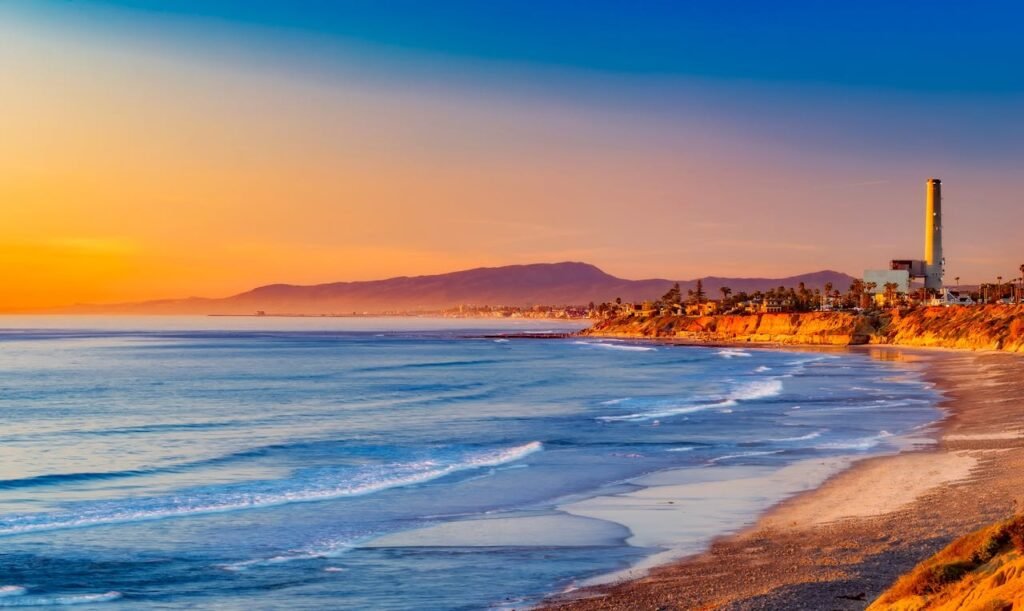Overlanding, the self-reliant adventure of exploring remote locales via off-road vehicles, has gained immense popularity among outdoor enthusiasts. California, with its diverse landscapes ranging from sandy deserts to dense forests and rugged coastlines, offers an unparalleled experience for overlanders. This article delves into the best overlanding routes in California, essential preparation tips, and the state’s unique regulations to ensure a safe and enjoyable journey.
Exploring California’s Iconic Overlanding Routes
California’s diverse geography provides a plethora of overlanding routes, each offering a unique set of challenges and spectacular scenery. Here are some must-explore trails:
The Mojave Road
Spanning approximately 140 miles from the Colorado River to the Mojave Desert, the Mojave Road is a historic trail that promises an authentic desert overlanding experience. This route takes you through rugged terrain, ancient lava fields, and remote desert landscapes. Key highlights include the Mojave National Preserve, the historic Fort Piute, and the mysterious rock cairns marking the trail. It’s essential to prepare adequately for this journey, as the Mojave Desert’s extreme temperatures and lack of water sources can be challenging.
Death Valley National Park
Death Valley is renowned for being the hottest and driest national park in the United States, yet it offers some of the most spectacular overlanding experiences. Trails like Titus Canyon Road and Racetrack Valley Road showcase the park’s dramatic landscapes, from deep canyons to expansive salt flats. Overlanding here requires careful planning and respect for the harsh desert environment. Be sure to check the road conditions and carry ample supplies, as the park’s remoteness can be unforgiving.
Rubicon Trail
For those seeking a more challenging and technical route, the Rubicon Trail in the Sierra Nevada Mountains is a legendary destination. Known for its rocky terrain and steep inclines, this 22-mile trail is not for the faint-hearted. It’s a haven for experienced off-roaders and offers breathtaking alpine scenery, including crystal-clear lakes and dense forests. The Rubicon Trail is best tackled with a well-equipped 4×4 vehicle and a group of fellow adventurers for safety.
Lost Coast
The Lost Coast is one of California’s most remote and pristine coastal areas, offering a unique overlanding experience along the rugged Pacific shoreline. The Usal Road and Mattole Road provide access to this secluded region, where towering cliffs, black sand beaches, and dense redwood forests await. The road conditions can be challenging, especially after rain, so a capable vehicle and preparedness for potential obstacles are crucial. Camping along the Lost Coast offers a serene escape from civilization with stunning ocean views.
Sierra National Forest
Sierra National Forest, located near Yosemite National Park, offers numerous overlanding opportunities with its network of forest roads and scenic byways. Trails like the Dusy-Ershim OHV Route and the Sierra Vista Scenic Byway take you through diverse landscapes, from granite peaks to lush meadows. Overlanding here provides a mix of challenging trails and picturesque camping spots, making it a great destination for both novice and experienced adventurers.
Essential Preparation for Overlanding in California
Overlanding in California, with its varied and often challenging terrains, requires thorough preparation to ensure safety and enjoyment. Here are some key preparation tips:
Vehicle Readiness
Your vehicle is your lifeline during an overlanding trip, so it must be in top condition. Ensure your 4×4 vehicle is equipped with off-road tires, a reliable suspension system, and essential recovery gear such as a winch, tow straps, and a high-lift jack. Regular maintenance checks, including brakes, fluid levels, and battery health, are crucial before embarking on your journey.
Navigation Tools
Relying solely on GPS can be risky in remote areas with limited signal. Equip yourself with detailed maps, a reliable GPS device, and a compass. Learning how to navigate using traditional methods can be invaluable if technology fails. Apps like Gaia GPS and OnX Offroad provide offline maps and trail information, making them useful tools for overlanders.
Essential Supplies
Carrying sufficient supplies is critical, especially in remote areas where services and stores are scarce. Ensure you have enough water, food, and fuel to last your entire trip, with extra reserves for emergencies. A first-aid kit, basic tools, spare parts, and camping gear, including a tent, sleeping bag, and cooking equipment, are also essential.
Communication
Staying connected in remote areas can be challenging but is vital for safety. Invest in a reliable two-way radio or a satellite communication device such as a satellite phone or a personal locator beacon (PLB). These tools can help you stay in touch with your group and call for help in emergencies.
Leave No Trace Principles
Overlanding allows you to explore some of California’s most pristine environments, so it’s crucial to practice Leave No Trace principles. Minimize your impact by sticking to designated trails, packing out all trash, and avoiding disturbing wildlife. Responsible overlanding ensures these beautiful landscapes remain unspoiled for future generations.
Understanding California’s Overlanding Regulations
California has specific regulations and guidelines for off-road driving and camping to protect its diverse ecosystems. Adhering to these rules is essential for both legal compliance and environmental preservation.
Permits and Passes
Certain areas in California require permits for off-road driving and camping. For instance, a permit is necessary to access the Rubicon Trail, and dispersed camping in national forests often requires a campfire permit. Researching and obtaining the necessary permits beforehand will prevent fines and ensure a smooth journey.
Vehicle Restrictions
Some trails have restrictions on vehicle types and sizes. It’s essential to verify that your vehicle meets the trail’s requirements, including width, height, and weight limits. Additionally, some areas restrict access during certain seasons to protect the environment or due to weather conditions.
Fire Safety
California is prone to wildfires, so fire safety is a critical concern. Follow all fire regulations, which may include restrictions on campfires, barbecues, and smoking in certain areas. Always carry a fire extinguisher and know how to use it, and be prepared to quickly extinguish any accidental fires.
Trail Etiquette
Respect for fellow adventurers and the environment is paramount. Yield to uphill traffic, minimize your speed to reduce dust, and avoid creating new trails. Proper trail etiquette ensures a positive experience for everyone and helps preserve the trails for future use.
Best Times for Overlanding in California
The timing of your overlanding trip can significantly impact your experience, as California’s climate varies greatly across different regions.
Desert Regions
The best time to explore desert regions like the Mojave Road and Death Valley is during the cooler months, from October to April. Summer temperatures can be dangerously high, making travel uncomfortable and potentially hazardous.
Mountain and Forest Areas
Mountain and forest areas such as the Sierra Nevada and Sierra National Forest are best visited during late spring to early fall (May to October). Snow can block trails in the winter and early spring, so checking trail conditions and weather forecasts is essential.
Coastal Routes
California’s coastal areas, including the Lost Coast, can be explored year-round. However, the best weather typically occurs from late spring to early fall, offering mild temperatures and clear skies. Winter months may bring rain and challenging road conditions.
Conclusion
Overlanding in California offers a thrilling and diverse adventure, from the vast deserts and towering mountains to the rugged coastline. By carefully planning your trip, respecting regulations, and practicing responsible travel, you can experience the best of what California has to offer. Whether you’re a seasoned overlander or a novice adventurer, the Golden State’s remarkable landscapes are waiting to be explored. So pack your gear, prepare your vehicle, and set off on an unforgettable overlanding journey through California’s unparalleled natural beauty.
Photo by Pixabay:












